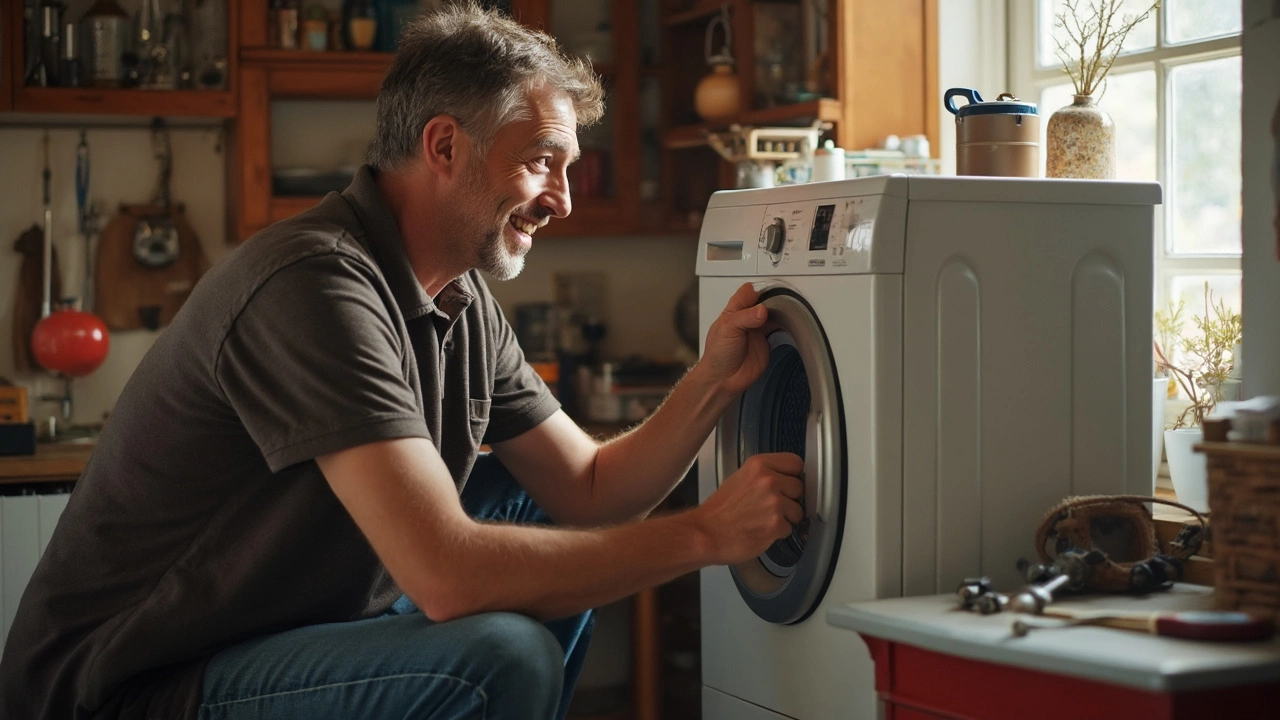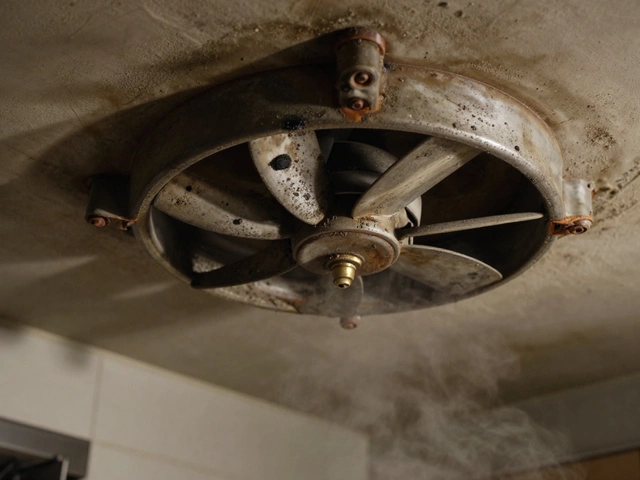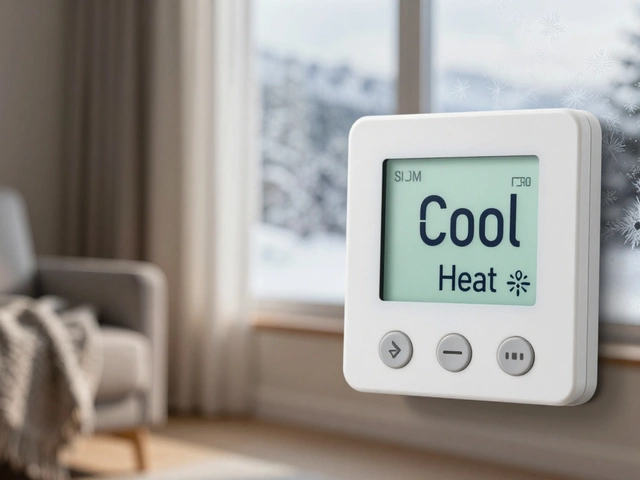Ever had that moment when you toss a heap of laundry in the washer, hit the start button, and… nothing happens? Or maybe you’re slogging through another load and the machine makes a noise that sounds like a robot is dying inside. Washing machines are one of those things you don’t really appreciate until they stop working right. Diagnosing washer problems can be a game-changer, especially if you want to save time, money, and that small mountain of dirty socks from taking over your bathroom floor. Stick around, because getting hands-on with your washer doesn’t have to mean diving straight into panic mode or immediately dialing a repair guy. Let’s get to the root of those washer headaches, one step at a time.
Spotting the Symptoms: What Is Your Washer Telling You?
If there’s one thing modern washers are good at, it’s sending signals when something’s wrong. The trick is figuring out what all those light blinks, error codes, or weird noises actually mean. For example, if your washer refuses to spin, you might spot a puddle forming under the appliance, or maybe your laundry is still dripping wet after the cycle ends. These issues often lead folks to blame the washer as a whole, but symptoms like vibration, no drainage, or loud banging usually point to specific culprits.
Let’s paint a clearer picture with some real-world signs:
- Won’t Start: Power light off, no humming, total silence. This often hints at problems with the power supply, door lock, or the control board.
- Won’t Spin or Agitate: Drum moves slowly or not at all. Wet laundry is classic here. Think drive belts, lid switches, or motor problems.
- Doesn’t Drain: Water stays in the drum or drains very slowly. This can mean a blocked drain hose, faulty pump, or lint filter issues.
- Leaking Water: Water escaping on the floor. Could be from loose hoses, worn door seals, or cracked drum components.
- Noisy Operation or Vibration: Thumping, grinding, or excessive shaking. Unbalanced loads are common, but keep an eye on suspension rods or drum bearings, too.
- Funky Smells: Odors like mildew or rotten eggs. This usually means stagnant water, clogged filters, or mold inside the gasket.
Funny enough, error codes are becoming more user-friendly. Modern washers will flash codes like "E1" for drainage issues or "F07" for motor trouble. Each manufacturer lists their error codes in the manual—if you can’t find yours, a quick web search for the brand and code usually turns up handy charts. Here’s a quick cheat sheet to the most common symptoms and their likely causes:
| Symptom | Likely Cause |
|---|---|
| Won’t start | Door lock, power outlet, fuse |
| No spinning | Lid switch, belt, motor coupling |
| Leaks water | Hose fitting, door gasket, water valve |
| Loud banging | Unbalanced load, suspension rods |
| No draining | Pump, filter, drain hose |
The bottom line: if your machine changes its “mood,” don’t ignore the message. Most faults can be linked back to a handful of usual suspects.
Easy First Checks Before You Panic
Here’s my rule—before you break out any tools or make repair appointments, run through the low-hanging fruit. Washers, old and new, can be fussy about basics.
Start with power. It sounds silly, but unplugged cords, tripped circuit breakers, or dead wall sockets cause more calls to appliance techs than you’d think. Next, check the lid or door. Top-loaders, especially, won’t work if the lid switch isn’t fully engaged—or if the switch itself has snapped. Front-loaders need a secure latch; those can break or get blocked by debris.
Got water issues? Twist both the hot and cold water supply valves to make sure they’re open. Hoses can kink behind the washer, especially if the washer gets nudged back into place. Hooked your washer up in a tight laundry closet? It happens. If your machine takes forever to fill or doesn’t fill at all, check for kinked or blocked hoses or screens where the hoses connect to the washer.
Piling in way too much laundry? Overloading the drum can trip sensors or throw it off balance, leading to weird noises, no spinning, or even shutoff mid-cycle. Most folks ignore those little loading diagrams, but following the guidelines really matters for machine health.
Funny fact—the most common “fix” Laura and I ever needed was to make sure the machine was plugged in and the breaker wasn’t tripped. Keep it simple before overthinking the problem!
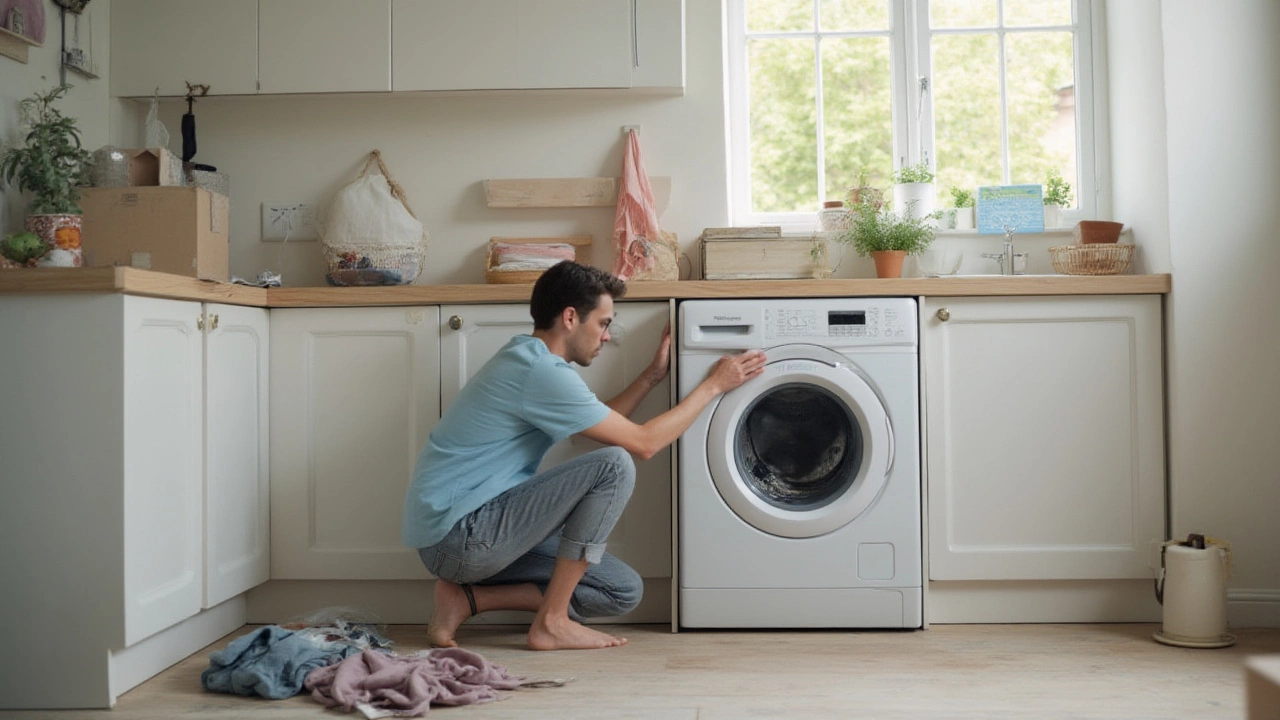
Diagnosing Specific Washer Problems Step by Step
Getting hands-on is easier when you break down the steps based on what the washer is doing (or refusing to do). If you’re up for it, here’s how I usually run through troubleshooting, with a focus on safety and simple tools—usually just a screwdriver, some pliers, a small bowl, and maybe a flashlight.
- Washer Doesn’t Start
- Plug something else into the outlet (lamp, fan) to see if it’s live.
- Check if the child lock is on (a hidden culprit).
- Inspect the control panel for stuck buttons.
- Wiggle the door or lid to confirm it engages the safety switch.
- Examine the fuse box or breaker. - No Spinning or Agitation
- Open and close the lid or door and listen for a “click”—top loaders have a switch beneath the lid.
- Remove a little laundry if you’ve overloaded the washer.
- Unplug the washer, tip it back, and check the drive belt for wear or breaks (belt-driven washers only).
- Look for error codes on digital machines. - Drainage Problems
- Pull out the machine slightly to access the drain hose at the back.
- Detach the hose (have a towel or bucket ready for spills).
- Check for lint, coins, socks or gunk clogging the line.
- Look for filters or an access panel near the bottom front of the machine—some washers hide the drain pump filter here.
- Make sure the hose angles upward above the drain line, or it could create a siphon effect and keep filling or draining at the wrong times. - Leaky Washer
- Run a short cycle and look carefully for drips or puddling at connections, the door, or underneath.
- Tighten hose clamps and double-check that hoses aren’t split or corroded.
- Examine the front door gasket for tears or buildup (front-loaders often accumulate debris here). Wipe down the gasket with a vinegar solution to clear any gunk. - Noisy or Shaking Washer
- Redistribute the load inside for balance.
- Level the machine with adjustable feet (use a bubble level if needed).
- For persistent banging, check for a broken suspension rod or spring inside.
- Listen for grinding—could be worn bearings or objects stuck between drum and tub.
Remember, if you see frayed wires, smell burning, or find water under the machine every time, stop and unplug it immediately. There’s a safety limit for DIY diagnosis, and it’s best not to push it if you’re unsure!
Washer Error Codes and What They Really Mean
Here’s the wild thing—almost all modern washers, especially top brands made after 2015, use error codes to point you in the right direction. Instead of playing guesswork, you can get a readout straight from the machine.
Ever seen “E2” flashing and wondered if it meant doom? Actually, “E2” is pretty mild—on many models, that means trouble draining water. “F1” or “OE” on others points squarely at fill valve or overflow issues. Pick up the manual, or if you tossed it, look up your washer’s make and model plus the error code. Official manufacturer websites, forums, and even YouTube tutorials spell out what each code means.
| Error Code | Meaning (Common Brands) |
|---|---|
| E1 | Drain problem (filter/hose clogged) |
| OE | Overflow error (fill valve stuck, draining issue) |
| F21 | No/slow drain (drain pump filter or pump fault) |
| UC | Voltage issue (could be home wiring or power supply) |
| LE | Door lock error (bad latch or wiring) |
If you hit a code, jot it down right away—the display may clear if power is lost. Some washers let you run a “diagnostic mode” by pressing button combos (check your manual or search your machine online for walkthroughs). These modes will flash every issue the computer picked up since the last reset. Kind of like bringing your car in and having a mechanic hook up the scanner.
Here’s a tip: Record your washer’s error codes in your phone notes. Next time something crops up, you’ll know if it’s a recurring theme or something new. If you do call a repair tech, giving them the exact code up front saves time and often a service charge if it’s an easy fix.
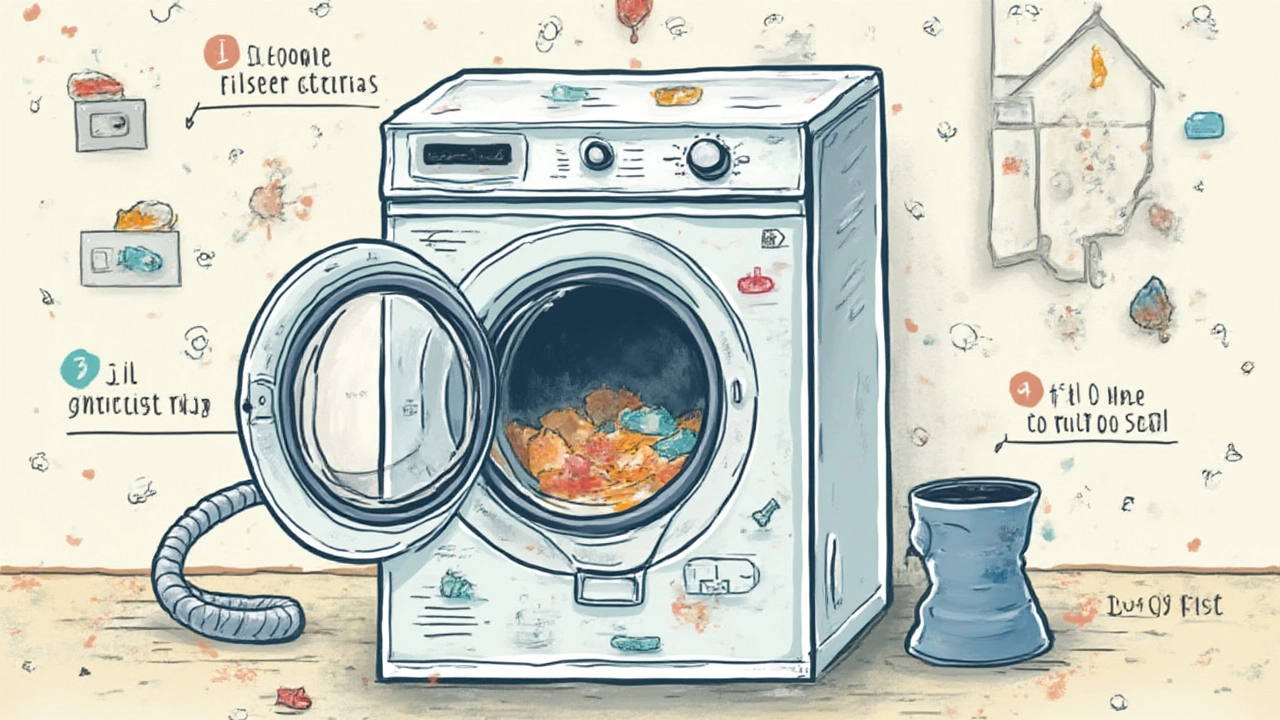
When to Call a Pro and How to Keep Your Washer Healthy
I get it—everyone wants to be the hero and fix the washer solo. But sometimes, you just need a tech. If you notice electrical burning smells, puddles every load, water that refuses to stay in the drum, or stubborn error codes that keep returning no matter what you try, don’t press your luck. Serious faults like failed control boards, blown motors, or snapped suspension rods need pro tools and know-how.
But here’s the good news—regular care keeps a lot of these headaches at bay:
- Run a drum cleaning cycle monthly. Hot water plus a scoop of baking soda and vinegar keeps interior fresh and prevents mold.
- Leave the door open for half an hour after each wash. Airing out stops mold and mildew from taking over the drum or gasket.
- Check and clean the drain pump filter every few weeks. Most manuals show where to find this (usually at the front, low down).
- Wipe down door gaskets to stop grime and keep seals tight.
- Watch your detergent use—high efficiency (HE) washers really do need low-sudsing detergent, or you’ll get itchy buildup in places you can’t see.
- Don’t ignore new noises—usually a faint rumble or squeak hints at a minor fix before it turns major.
A 2023 industry survey found that about 68% of common washer failures could be traced to clogged filters, neglected maintenance, or simply ignoring warning signs. Most folks only call for help when the laundry mountain becomes unmanageable. Don’t be that guy. A few minutes of prevention goes a long way, and you’ll keep your washer humming for years.
Next time you’re tempted to write off your washer as a lost cause, remember: diagnosing washer problems isn’t about guessing; it’s about looking, listening, and acting early. Sometimes all you need is a flashlight, patience, and a knack for following clues. And hey, you’ll probably get bragging rights or at least a grateful high-five from the rest of the household.


